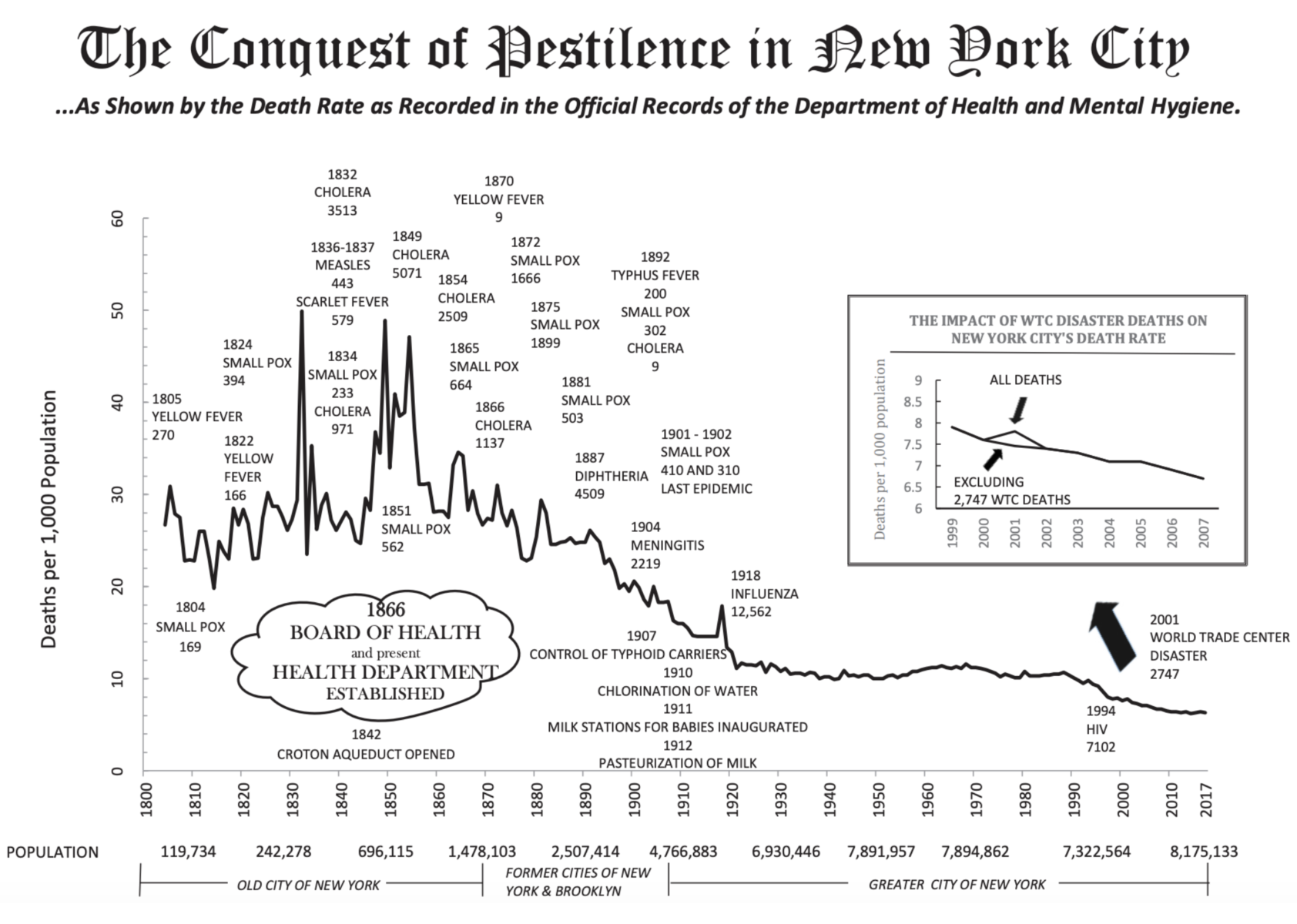Your Ancestors Knew Death in Ways You Never Will

Source: New York Times, New York City Department of Health and Mental Hygiene
This is a fascinating discussion about the 1918 pandemic and how far medicine has advanced:
“The annual baseline back then was about 25 deaths per 1,000 New Yorkers, and in some years the toll reached 50 per 1,000. In other words, in bad years, New Yorkers saw twice as many people around them die as usual. And they were used to seeing about four times as much death as we now do.
The sharpest peaks were the cholera epidemics of 1832, 1849 and 1854. But plagues came in waves, sometimes more than one simultaneously: yellow fever, smallpox, measles, scarlet fever, diphtheria, typhus and meningitis…
The death rate began dropping after the 1860s. New Yorkers — both citizens and doctors — had finally stopped arguing and reached consensus on some basic issues.
First of all, most finally accepted the “germ theory” of disease, acknowledging that it was caused by invisible enemies…
As a result, New Yorkers took certain steps — sometimes very expensive and contentious, but all based on science: They dug sewers to pipe filth into the Hudson and East Rivers instead of letting it pool in the streets. In 1842, they built the Croton Aqueduct to carry fresh water to Manhattan. In 1910, they chlorinated its water to kill more germs. In 1912, they began requiring dairies to heat their milk because a Frenchman named Louis Pasteur had shown that doing so spared children from tuberculosis. Over time, they made smallpox vaccination mandatory.
Go check out the entire thing here…

